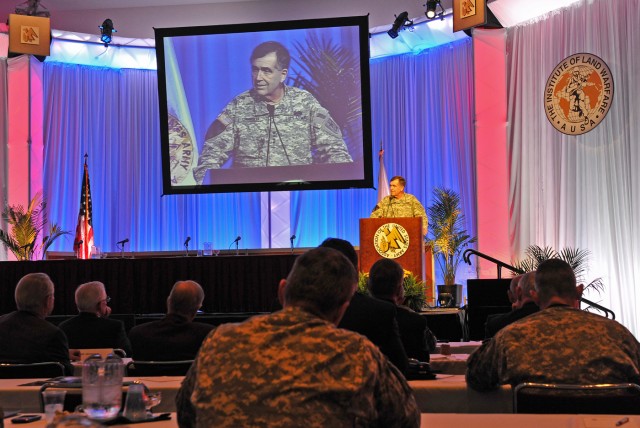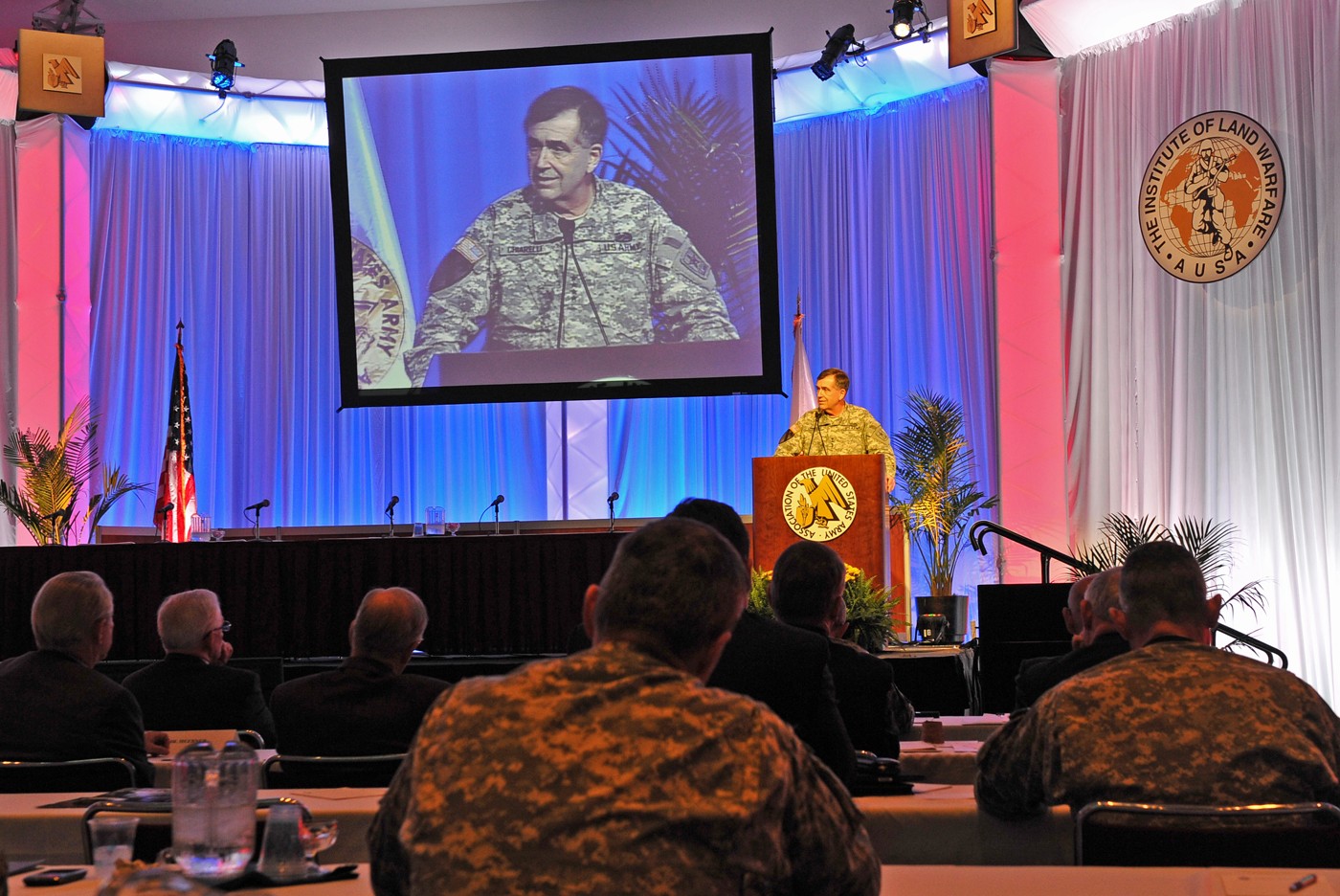
FORT LAUDERDALE, Fla. (Army News Service, Feb. 25, 2011) -- The small unit, meaning the squad and the platoon, are without question now and will continue to be the most decisive elements in Army formations, said the Army's vice chief of staff.
Speaking at the Association of the U.S. Army Land Warfare Institute's Winter Symposium and Exhibition here Feb. 23, Gen. Peter W. Chiarelli said the days are over when battlefield decisions were made almost totally at senior levels of command. No longer is information pushed down to subordinate leaders on an as-needed basis in the form of operations orders and command directives.
"The majority of information is collected by Soldiers at the unit level, the same guys and gals making the majority of the game-changing decisions," he said. "The fact remains in the operational environments we find ourselves in today, it is the noncommissioned officers and enlisted Soldiers who are on the ground dealing with situations that arise."
The general said increased importance of lowest-level decision making and information gathering was a driver for the Army's emphasis on developing the tactical information network needed to provide leaders and Soldiers ready access to significantly more information than in the past.
While Chiarelli said he was excited to see that network grow with the release next week of the second increment to the Warfighter Information Network-Tactical, which will place even more information in the hands of Soldiers, "the truth is the surge we're seeing in new technologies does represent a double-edged sword.
"The reality is every Soldier that we employ and every savvy terrorist we encounter has a cell phone or some kind of smart phone capable of taking pictures or videos that then can be transmitted halfway around the world in a matter of seconds," Chiarelli said.
The general also said that the presence of social media has transformed the battlefield into a more transparent, complex and decentralized operational environment.
"There are second- and third-order effects whenever you field a new capability, especially one that serves to increase the amount of data available on today's battlefield," he said. "We have a responsibility to train individuals accordingly and not just on simple skills or mechanical tasks, but even more importantly on how to handle and analyze the vast amounts of information and data they're receiving."
Chiarelli went on to say that the Army's network must not just serve those in combat but those all over the force. It must encompass networks at military stations stateside, at training centers, in brigade and battalion classrooms, home stations and school houses.
"The intent is to provide all Soldiers with the ability to get whatever information they need, anytime, anywhere in the world," Chiarelli said.

Social Sharing